How New Haven’s urban renewal in the 1960s continues to influence the city
Federal funds were supposed to make the Connecticut city a "model." A new city project attempts to reverse those efforts.

“Bustling.”
It’s a word many Oak Street residents used to describe the road located a block from the Orchard Street School in New Haven in the 1950s. A passerby would stroll past grocery stores, butchers, blacksmiths, tailors, hardware stores, boutiques and street vendors with carts full of goods for sale.
“You could walk down Legion (Avenue) and Oak Street and get what you need at Ratner’s and other stores,” said Patti Illingworth, whose family came to America from Italy. “On the weekend, they couldn’t get down Legion Ave with a car. There were people selling bagels and bread and people milling around. Pepe’s A’pizza would stand on Oak Street with a cardboard box and sell pizzas.”
Patti Illingworth's family
Legion Avenue today
Oak Street’s immigrants, like the commerce, represented diverse backgrounds. Black people, Italian people, Jewish people and immigrants from across Europe settled there. It was a short walk to work at one of New Haven’s many factories.
“You knew your neighbor, you had the opportunity to communicate with your neighbor,” said John Dye, who lived on nearby Gilbert Street. “Everybody knew everybody.”
Today, Oak Street is gone — a victim of a federally funded urban renewal process that sought to demolish “slum” living, bring suburban residents into the city and center New Haven around cars.
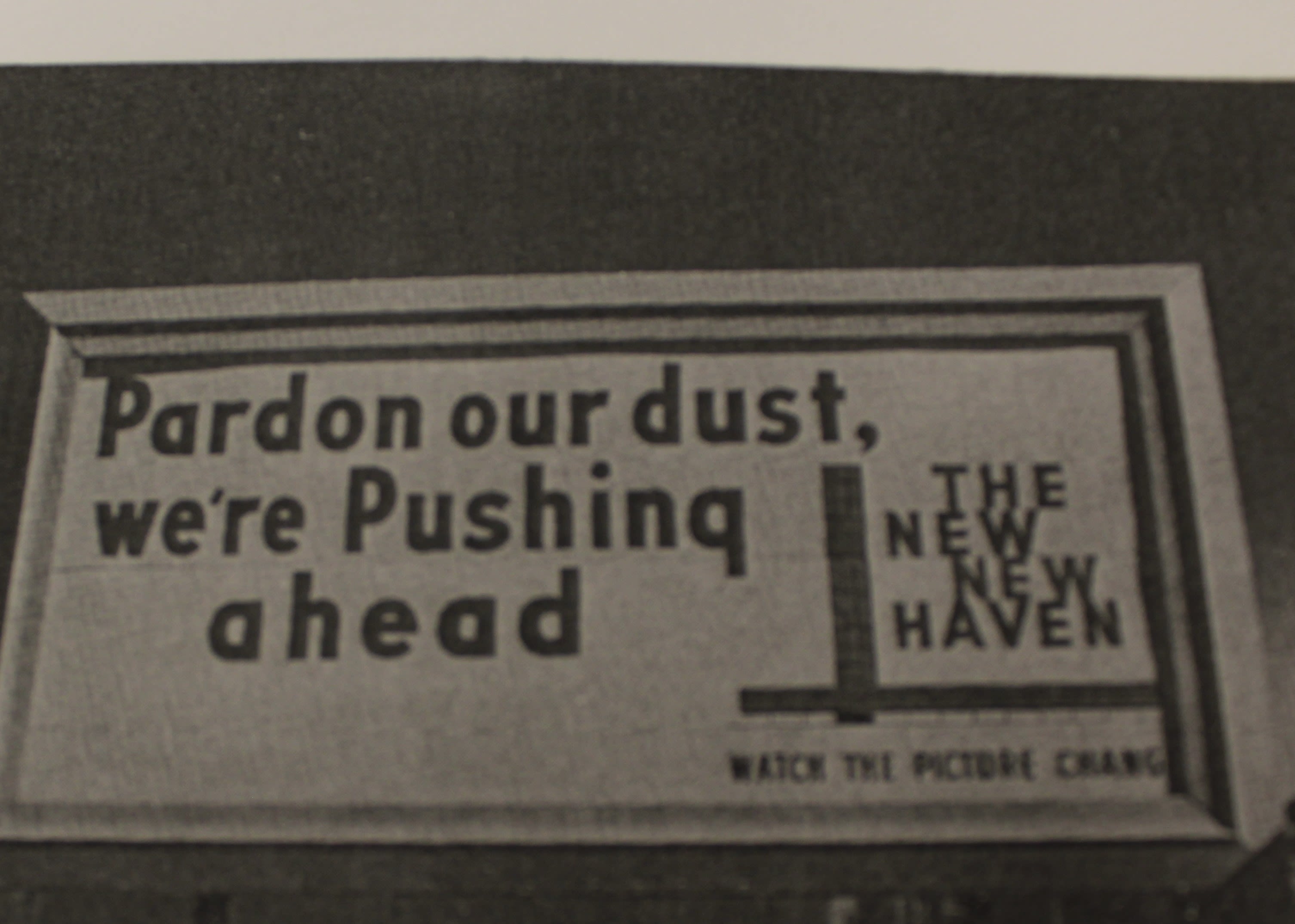
"The New New Haven" billboards seen around the city during redevelopment reflected the project's affinity for model city creation. (Billboard image from the Jewish Historical Society)
"The New New Haven" billboards seen around the city during redevelopment reflected the project's affinity for model city creation. (Billboard image from the Jewish Historical Society)
Joseph Levine lived near Oak Street from 1917 to 1926.
“Where the stores…used to be, I found only empty lots being prepared for a large building program,” wrote Levine the “Jews in New Haven” collection at the Jewish Historical Society in New Haven.
Urban renewal displaced 7,704 families — a total of 22,496 people by 1969 — according to the 2008 book “Model City Blues” by Mandi Isaacs Jackson. Most lived in Wooster Square, The Hill and Dixwell.
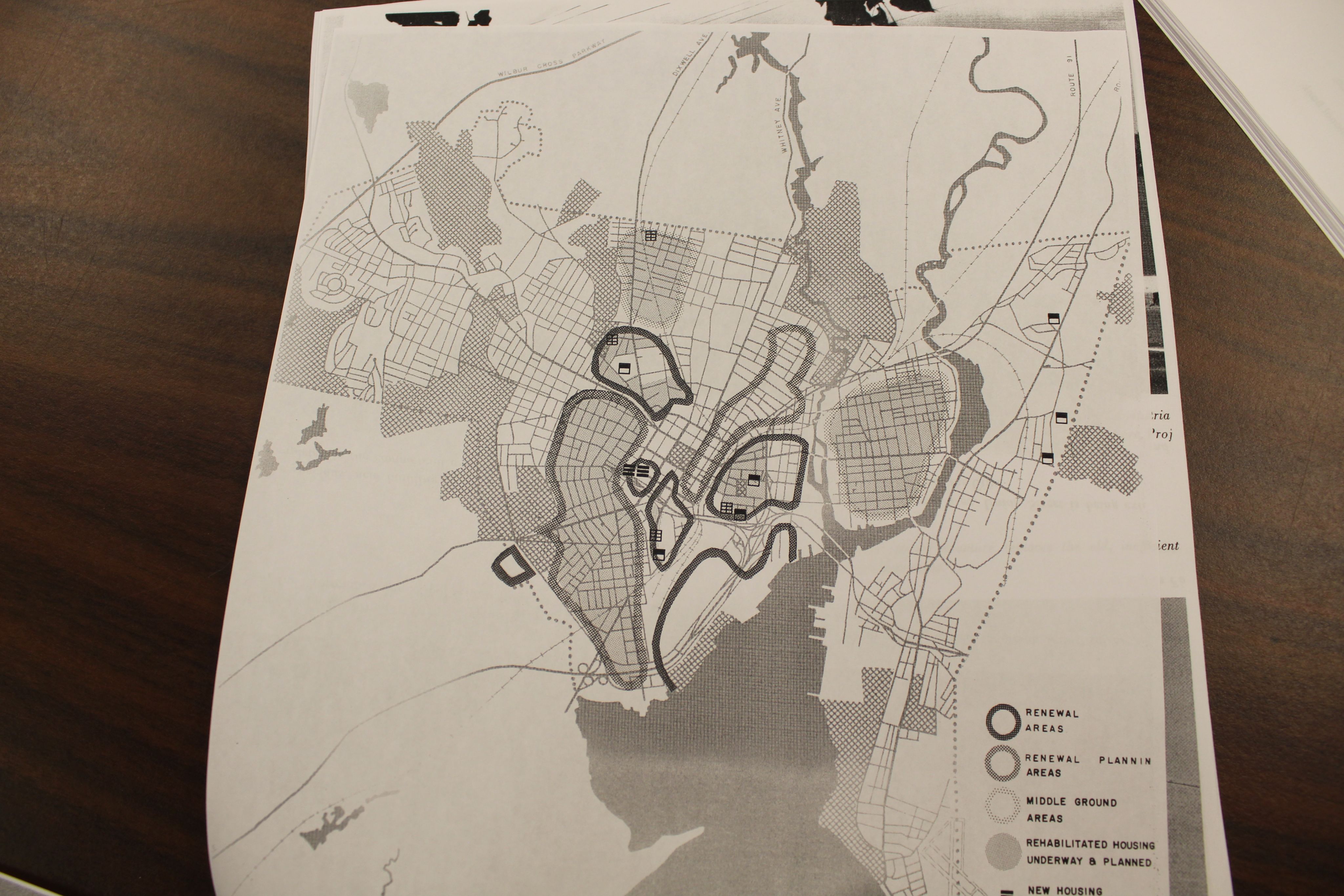
Maps like these laid out priority areas for urban renewal projects. (Map from the Jewish Historical Society)
Maps like these laid out priority areas for urban renewal projects. (Map from the Jewish Historical Society)
Between 1954 and 1966, the city demolished 5,000 living units, according to “No Haven: From Civil Rights to Black Power in New Haven, Connecticut'' by Yohuru Williams. Of the 1,500 units that replaced, the city assigned half to elderly and middle-income residents. A staggering 793 units were slated for luxury housing.
Public housing accounted for 12.
It’s been 63 years since the “Oak Street Connector” replaced Oak Street and disconnected the grid of tight-knit neighborhoods in New Haven. New Haven residents still struggle with housing insecurity and ramifications of the program.
“You've got communities that are bisected by highways that are both separated and segregated,” said Karen Dubois-Walton, executive director of the Housing Authority of New Haven. “Communities are knitted together by your ability to walk and move about. Well you can't walk in a community that has a highway running through it.”
Why lobby Congress for funding to complete a project many historians view as a failure?
The mayor responsible for the project, Richard Lee, is not alive to tell his side of the story but relatives, experts and friends of the family said his quest to make New Haven into a “model city” was rooted in good intention.
“A lot of what they did you have to understand in the context of the times, and it's not what we would today consider winning strategies,” said Lizabeth Cohen, professor of American Studies at Harvard, who authored a book on New Haven City Planner Ed Logue.
Today, construction workers are busy in New Haven dismantling the highway that Lee moved mountains for. This work is part of a project called “Downtown Crossing.”
“Everyone who is now working on these projects, is undoing the Mayor Lee era,” said Doug Hausladen, executive director of the New Haven Parking Authority.
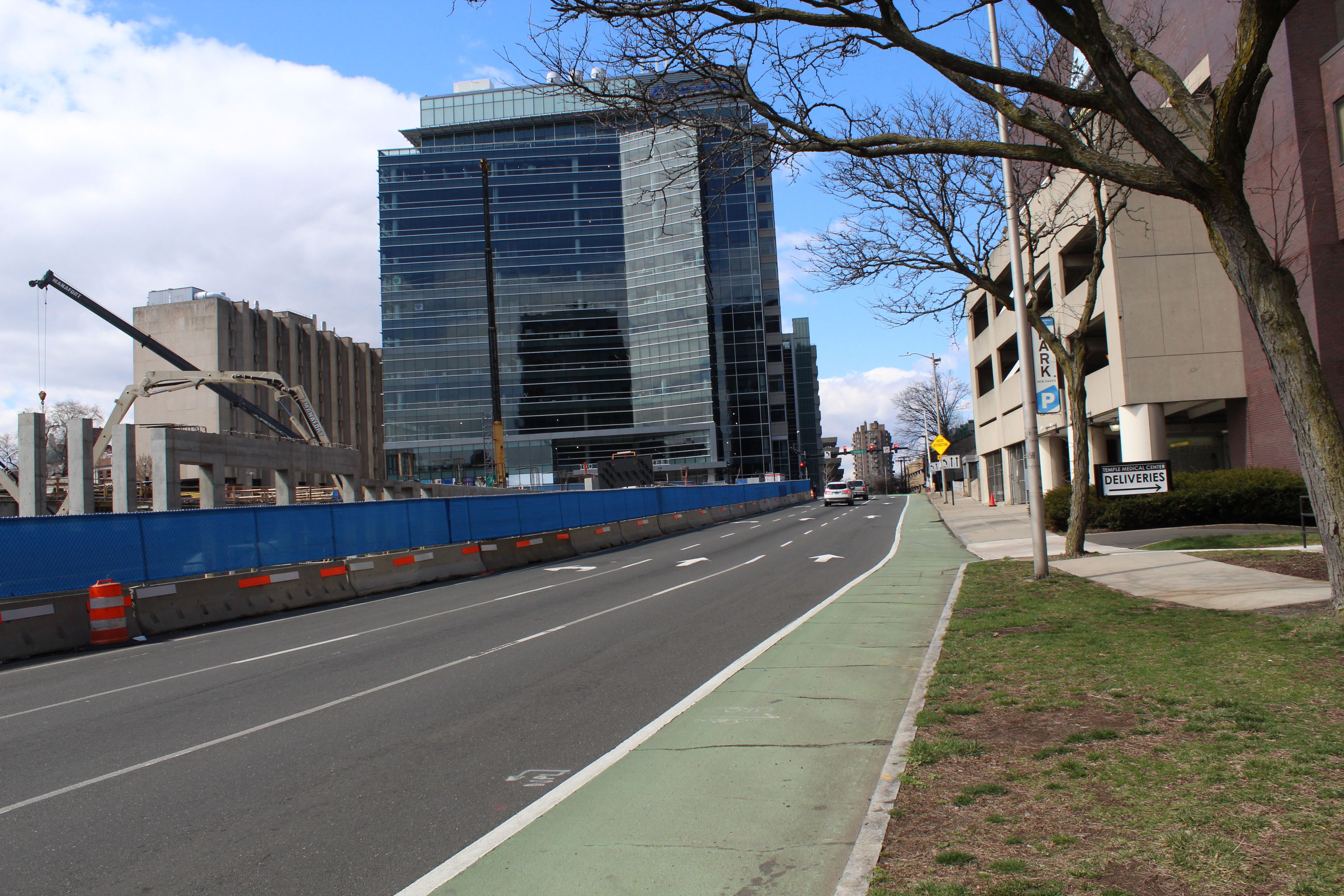
A dream
Fourteen-year-old Richard Lee delivered papers in the rich neighborhoods in New Haven in the 1930s. He left the paper at the back door where the kitchen staff would greet him. They told him he was a smooth talker, politician-like. He admired the quality of the houses, the amenities and the cleanliness.
Back home, he put quarters into a heater in the basement of his family’s apartment complex during cold Connecticut winters, and he thought about what they didn’t have.
“It didn't matter what side of the street you were on in New Haven, when you lived in this slum area, you lived in the slum area,” said Sally Lee, Richard’s daughter.
The houses he venerated were on Prospect Street, but he and his family grew up in the Newhallville neighborhood in a three-story tenement house. His father worked at the Winchester Repeating Arms Company.
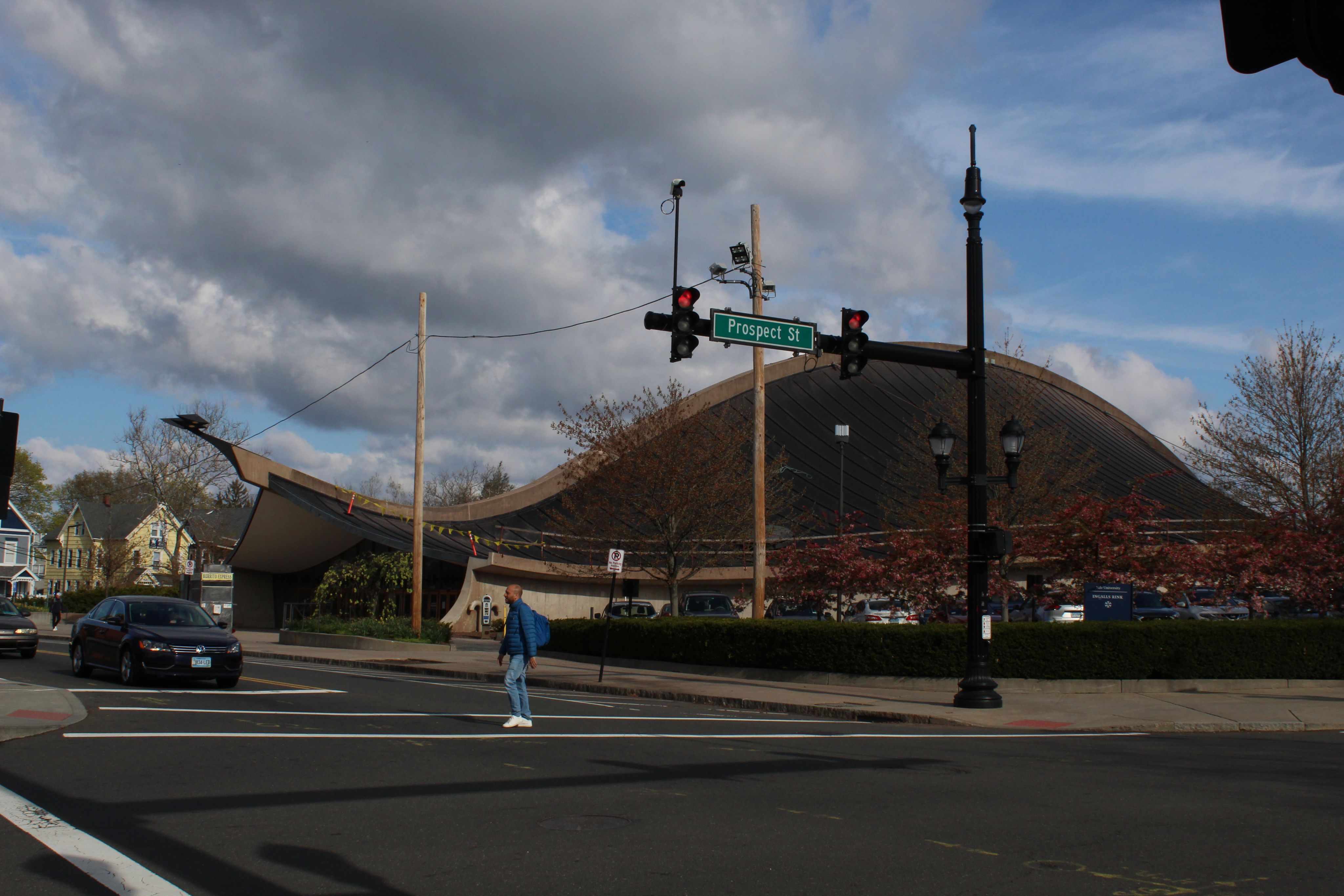
Prospect Street in New Haven was home to many of the houses Lee used to admire (Photo by Emily DiSalvo)
Prospect Street in New Haven was home to many of the houses Lee used to admire (Photo by Emily DiSalvo)
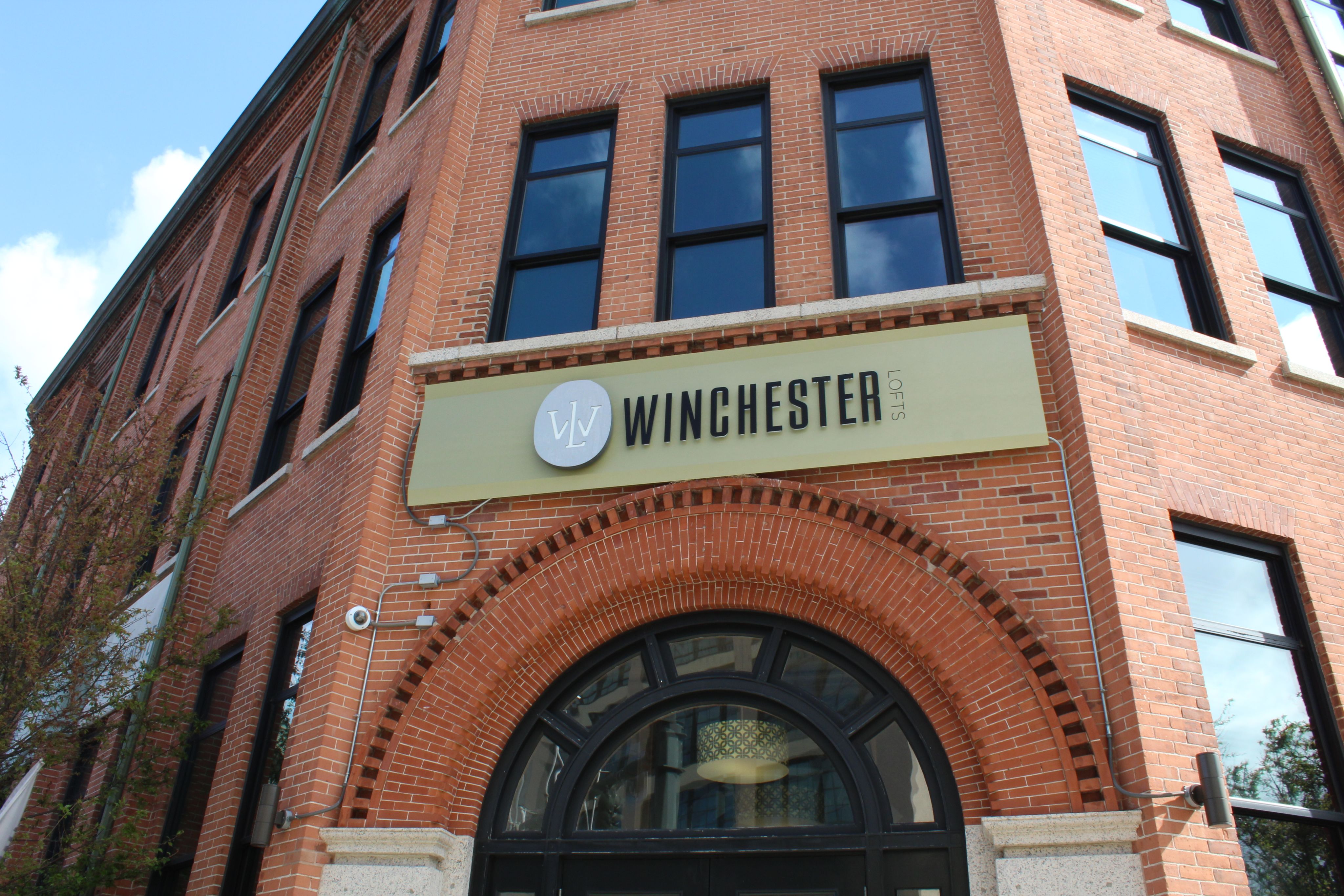
The Winchester Repeating Arms factory is now a luxury apartment building. (Photo by Emily DiSalvo)
The Winchester Repeating Arms factory is now a luxury apartment building. (Photo by Emily DiSalvo)
“The city was in such desperate condition that he just wanted to make it better,” Sally Lee said.
Richard Lee, who grew up to become New Haven’s most infamous mayor, was not the first person to have a vision for a better city.
In 1910, years before his birth, the “Report of the New Haven Civic Improvement Commission” laid out a future for the city centered around public transit, a bustling downtown and investing in neighborhoods.
“So far as it appears on the face of the figures, there seems to be no reason why New Haven should hesitate, on the score of financial difficulties, to undertake a bold and farsighted policy in needful public improvements, provided the work is done without waste, extravagance or corruption,” wrote the commission, led by architect Cass Gilbert and landscape architect Frederick Law Olmstead.
The priorities in the document included expanded railroads, a subway beneath nine blocks, parks and playgrounds, a public square and the widening of some streets.
The report landed on the desk of Mayor Frank Rice, who ignored it, as trash removal preoccupied his mind. The report, if taken seriously, could have enacted changes that would have catered to city residents, rather than those who came to visit or work, by providing public transportation options and community spaces.
The population of New Haven climbed 19.14% between 1900 and 1910 to 133,605 people.
“The plan recommended is intended to take advantage of present real estate conditions, to recognize all the growing conditions and to produce a simple, dignified and economical solution of the many problems involved,” the commission wrote.
A city planner in 1910 detailed the conditions in Douglass Rae's 2003 book "City: Urbanism and Its End": “Back tenements, unsanitary shacks, crowding, secrecy and filth are the results of crowding poor and ignorant people into a region where each of the insufficient number of dwellings has a long piece of wasteland tucked in behind it out of sight.”
This language paved the way for later assessments of the worth and treatment of the immigrant community.
At the time of the commission’s report, the use of the automobile was becoming more and more common.
In the 40 years between 1870 and 1910, the number of cars in New Haven increased dramatically. It became apparent that any city planning would have to take into account traffic, but transportation, public or private, did not become a major city priority until Lee became mayor in 1954.
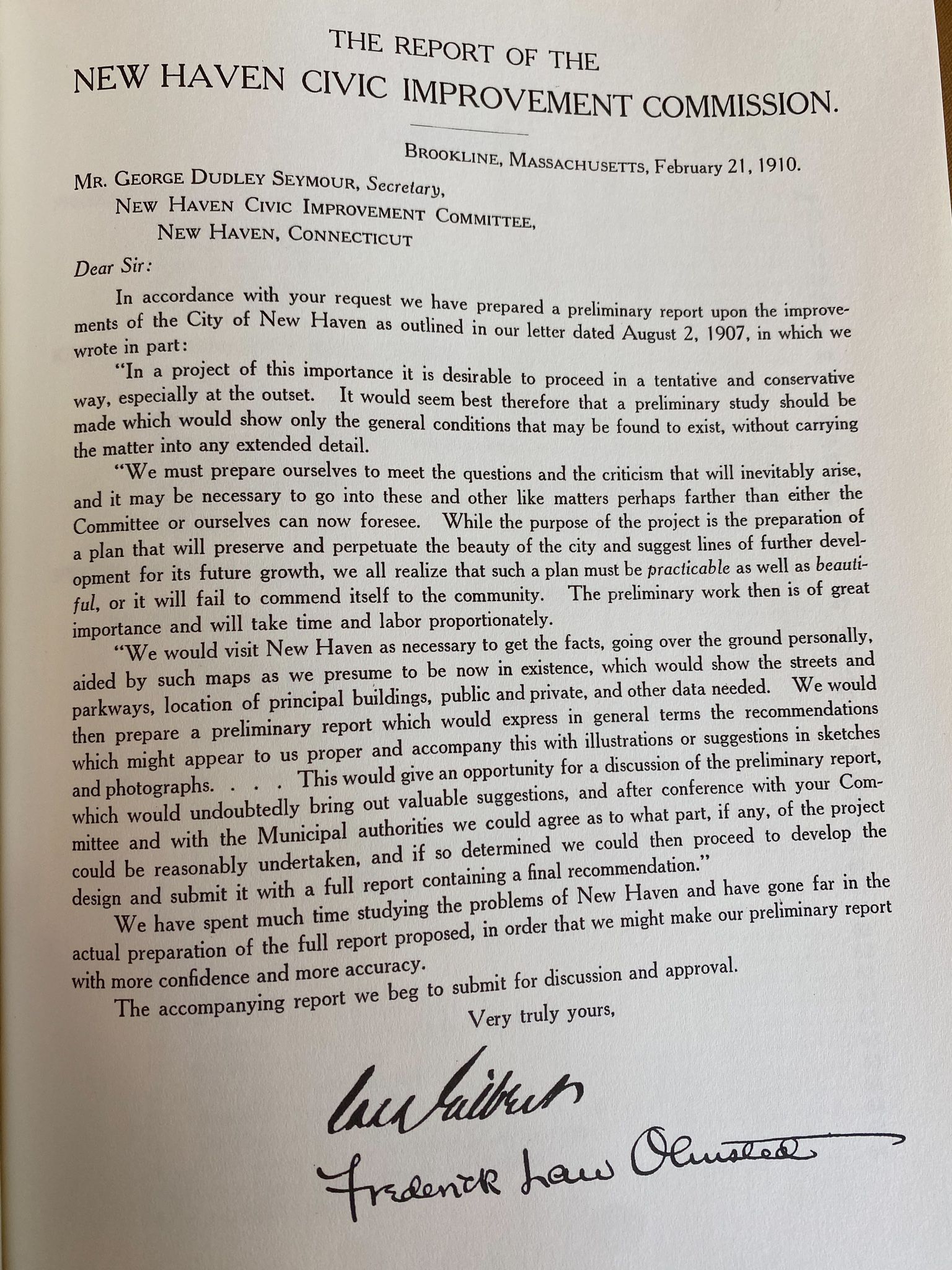
The state of the city as crassly described by the 1910 planner, haunted Lee as he grew up and worked in local politics. In 1951 Lee visited a “slum” on Oak Street.
“It was a terrible experience,” Lee said in 2002. “I went outside and threw up. I couldn’t help it.”
Lee planned; the federal government paid
Motivated by his poor childhood and the declining condition of some areas of the city, Lee ran for mayor after serving as an alderman and being involved in Democratic politics. Lee lost the mayoral election twice before winning in 1953.
“His hobby was being really unhappy with politics,” Sally Lee said of her father.
Lee had made his daughter and the neighborhood children an ice rink when she was growing up, but outside of this, she remembers much of his time consumed by work and reading.
All the work led to increased power and recognition.
The Housing Act of 1949 became federal law a few years before Lee took office. In “City: Urbanism and its End,” Douglas Rae wrote that the act was, “aimed at decaying residential areas, neighborhoods full of voters and children whose homes and businesses would be bought out and combined into parcels large enough to attract developers who would create facilities for upscale developments.”
Through this act, Lee scored a historic amount of money from the federal government by laying out a plan for how he’d use the money to redevelop New Haven.
By 1958, New Haven received historic funding for redevelopment— $4,800 per resident per year in today’s money — above cities like Boston, Newark and New York City.
This law was the vehicle for Lee to change the city as drastically as the 1910 commission report outlined, but with a radically different approach. Rather than railroads and playgrounds, Lee was focused on building for cars.
Lee and the designated Citizen’s Action Commission chose multiple areas for redevelopment. In addition to the Oak Street and Legion Avenue area, there was a Church Street and Long Wharf Project. The Church Street project included the construction of a Malley Department Store and a 1,500-car parking garage — amenities built for visitors to the city by car.
It was a strategy to compete with the suburbs.
“The suburbs have these brand new shopping centers with parking and everyone is going there,” said Elihu Rubin, professor of urbanism at Yale. “What are we left with in the city? We’re left with poor people and people of color who were excluded from the suburbs. And the city leaders are terrified.”
“The cities are, in part, responding to the fact that they're starting, in the ‘50s, to shrink,” Rubin said. “They are no longer the center, they are no longer secure in their position as the center of the region. The downtown shopping department stores are no longer as popular.”
Lee was not an urban planner, but rather a politician driven to make the New Haven he grew old in different from the one he grew up in. So, he found someone with the planning prowess to match his passion for city improvement — Ed Logue.
Logue served in World War II as a pilot. Flying above the Earth’s surface put a lot in perspective for him.
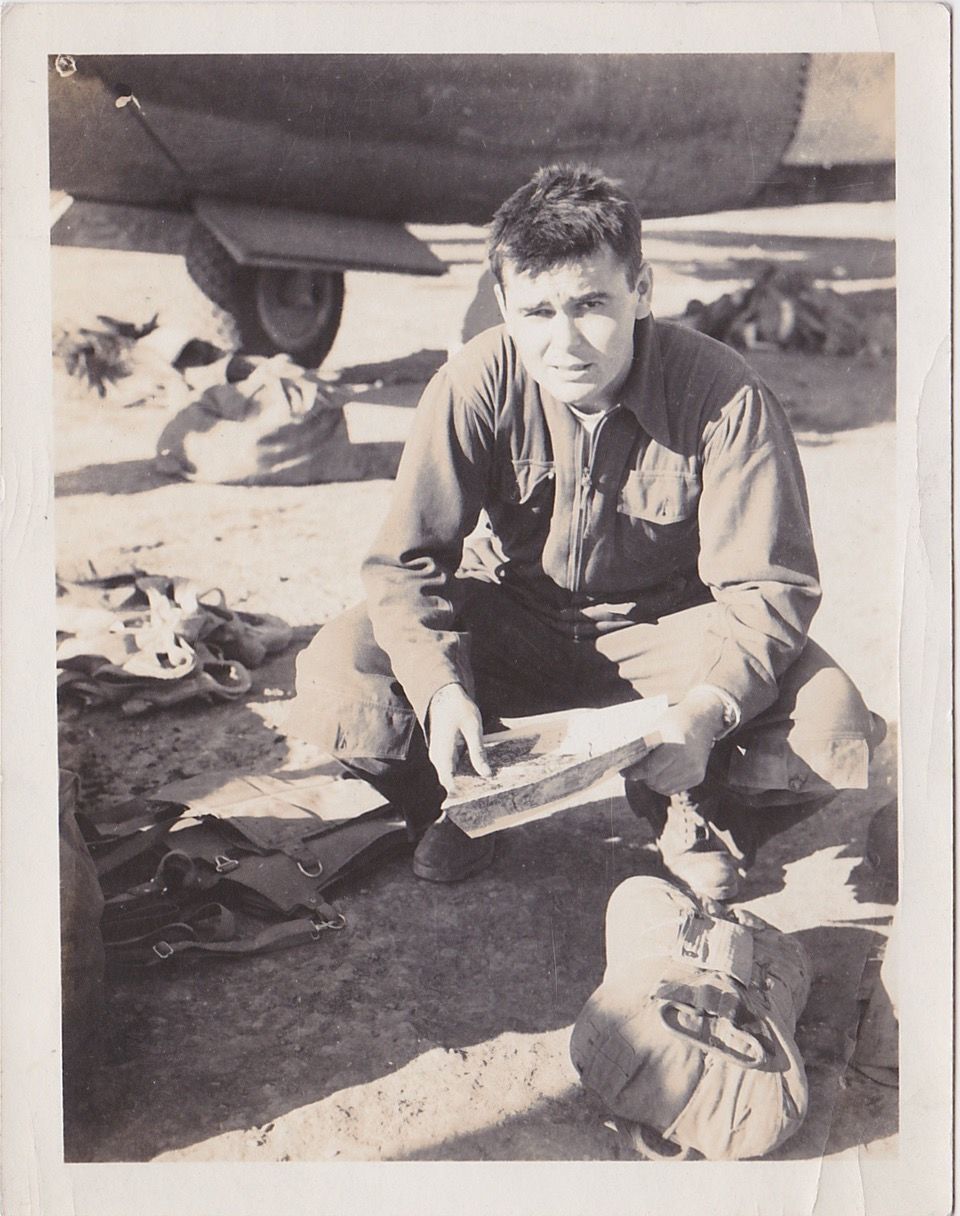
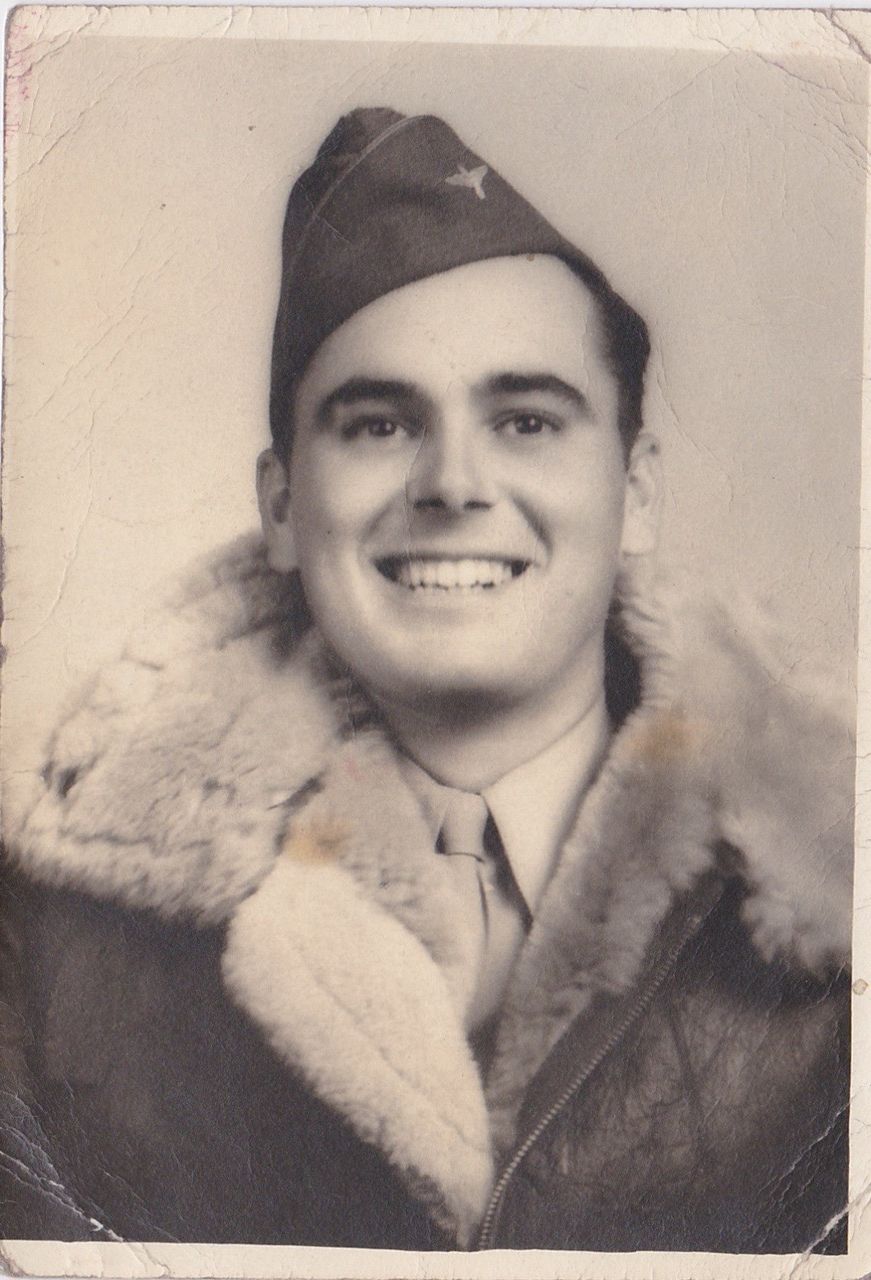
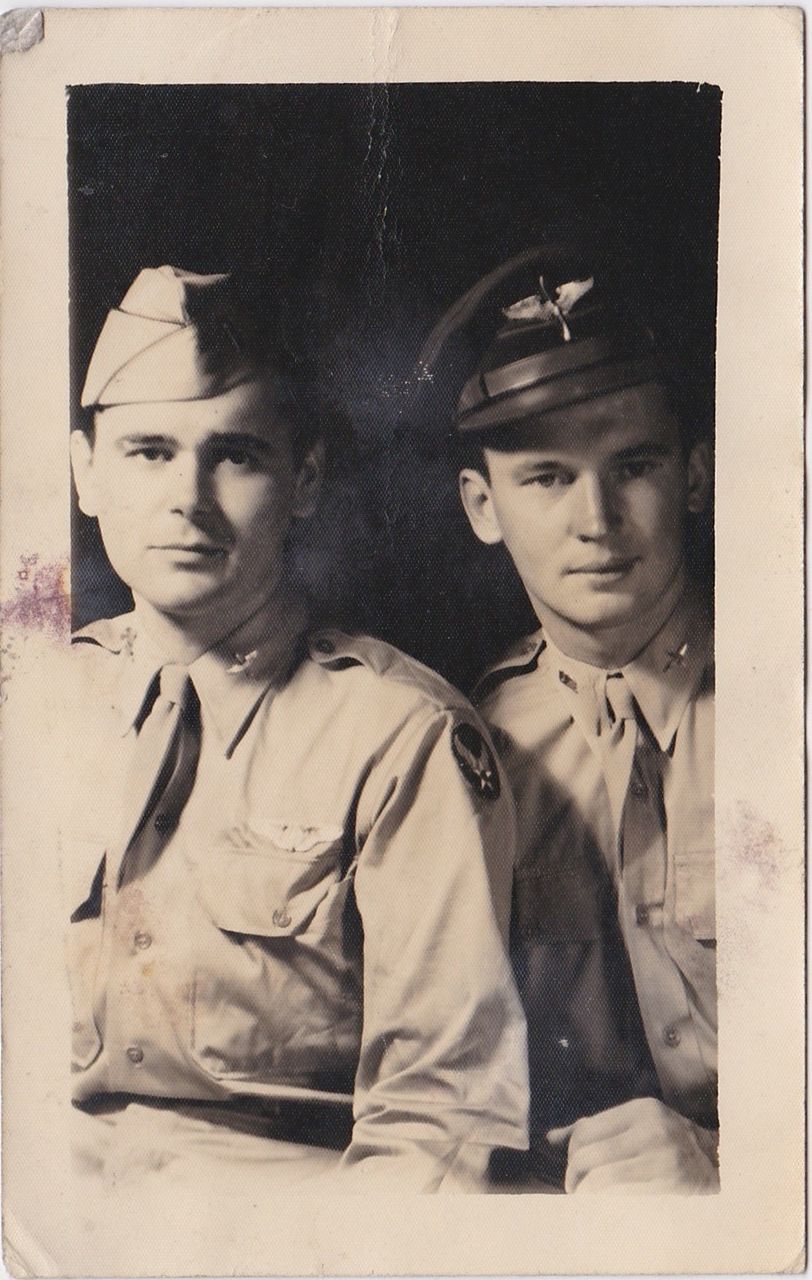



Ed Logue in World War II (Photos from the Logue family)
Ed Logue in World War II (Photos from the Logue family)
“He flew ahead of the bombers to essentially do a marking bomb to give people a target,” his son Bill Logue said. “In those situations what you are doing is sitting and watching the landscape unfold below you… he talked about spending that time, hours in the air looking down and seeing the cities and seeing the land how they developed and how they were laid out.”
This time in the air sparked an interest in land use which led him to work for the governor and eventually Mayor Lee in New Haven. Logue and Lee wielded a massive amount of federal funds to renew a city plagued with new problems caused by several shifts such as a decline in manufacturing jobs and an increase in car use.
The federal funds mandated how to carry out the urban renewal projects.
“There was very little money in the city, and a lot of money from the federal government that stipulated certain kinds of activities like clearance, not renovation,” said Harvard Professor Lizabeth Cohen.
Who lived there?
It is clear who the highway, the parking garage and the new Yale buildings were built for, and it wasn’t Patti Illingworth’s family, who immigrated from Italy, and others deeply embedded in the neighborhood.
“It was a way to make getting into the city easier for mostly white residents who didn't live in the city any longer,” said Marissa Brown, assistant director for programs of the John Nicholas Brown Center for Public Humanities and Cultural Heritage at Brown University.
Census data shows the white population in New Haven declined 16% from 1950 to 1960.
The plan, as stipulated by the federal funds, was to clear neighborhoods for progress. History is more than just street names and avenues converted to highways. It is people, neighborhoods, businesses and communities.
“They tore down the house; they tore down the whole area over [on Gilbert Street],” said John Dye, who moved to Gilbert Street in New Haven in 1959. “They sold out to Yale.”
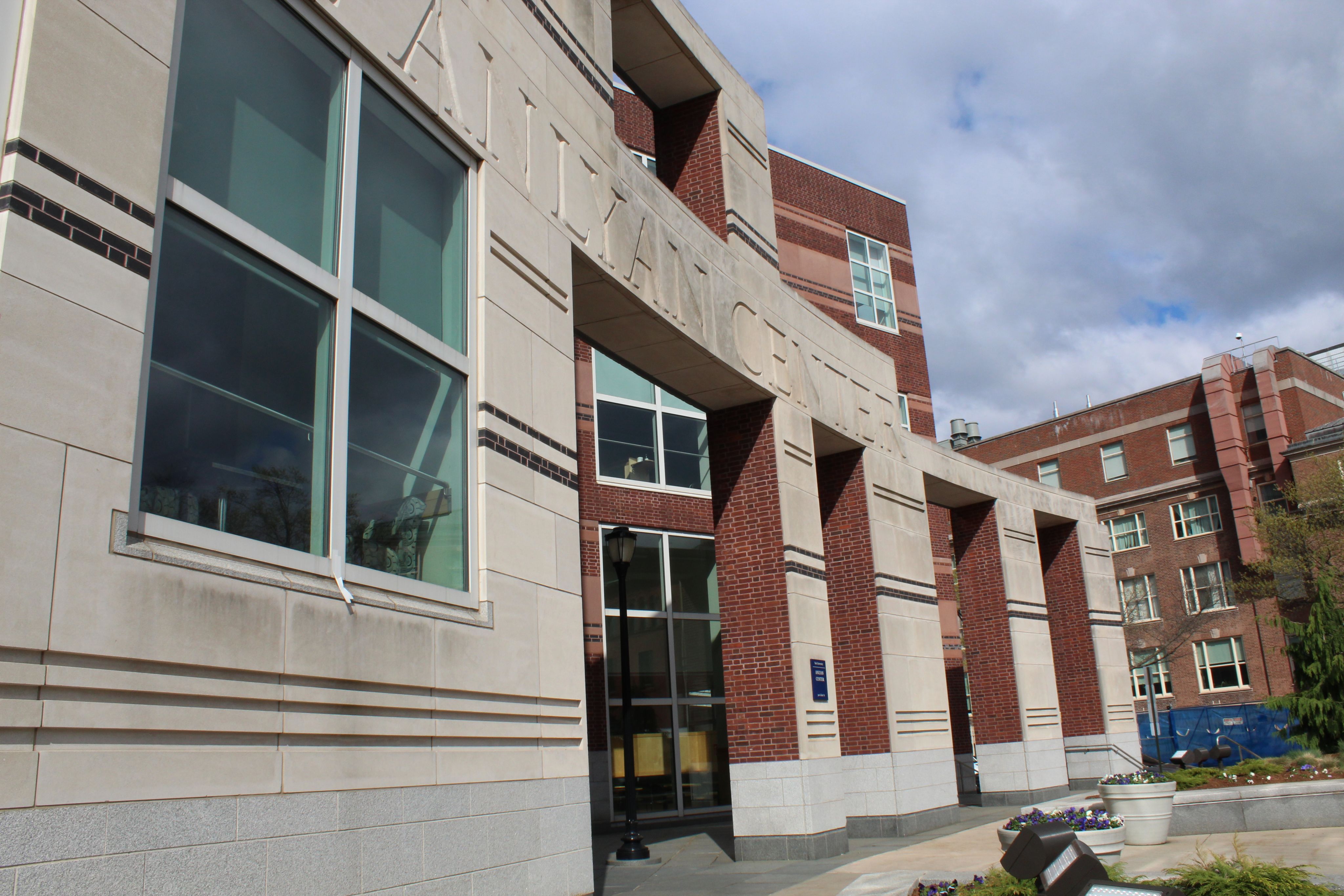
This Yale University building is located on Gilbert Street where Dye used to live. (Photo by Emily DiSalvo)
This Yale University building is located on Gilbert Street where Dye used to live. (Photo by Emily DiSalvo)
That road where Dye lived is now home to part of the Yale Medical School.
“Dick Lee was very inspired by Yale,” Rubin said. “Yale was expanding its campus, Yale was hiring modernist architects. Lee wanted to be part of a bold, heroic modernization program for the city.”
Dye lived in a three-family house with his brother and his brother’s family. His brother was an injured Korean War veteran who relocated because of the Veterans Affairs Hospital in West Haven. Gilbert Street was a place to settle down.
“It was one of the last streets in New Haven that had a blacksmith shop,” Dye said.
He remembered the street only having six or seven houses and said he was “very close” with his neighbors. Dye left the city for a few years to serve in the military and returned with his wife in 1965. Two years later, his brother got the notice.
“[The city] told the landlord they were selling the house to Yale so we moved out,” Dye said.
His brother’s family went to the Church Street South Project, which was torn down in 2018.
“When they moved to Gilbert Street to Church Street South it had better facilities because they had just built Church Street South,” Dye said. “They had more room.”
Dye and his wife got a house of their own on Arthur Street, where he still lives today. His road was not affected by the construction of the Oak Street Connector, but he knew the area well.
“When they brought that (connector) in I was in the area,” Dye said. “That area had mostly shops like bakeries. Small, small stores.”
Life in New Haven at this time makes Dye feel overcome with nostalgia. He’s still in the city now, but longs for the past.
“A lot of people walked to work,” Dye said. “There were a lot of mom and pop stores. It’s changed drastically. Congress Avenue was a very active place.”
While Congress Avenue still exists today, Dye said one couldn’t recognize it from the 1960s when it was filled with people walking to their jobs at the factories and visiting local stores.
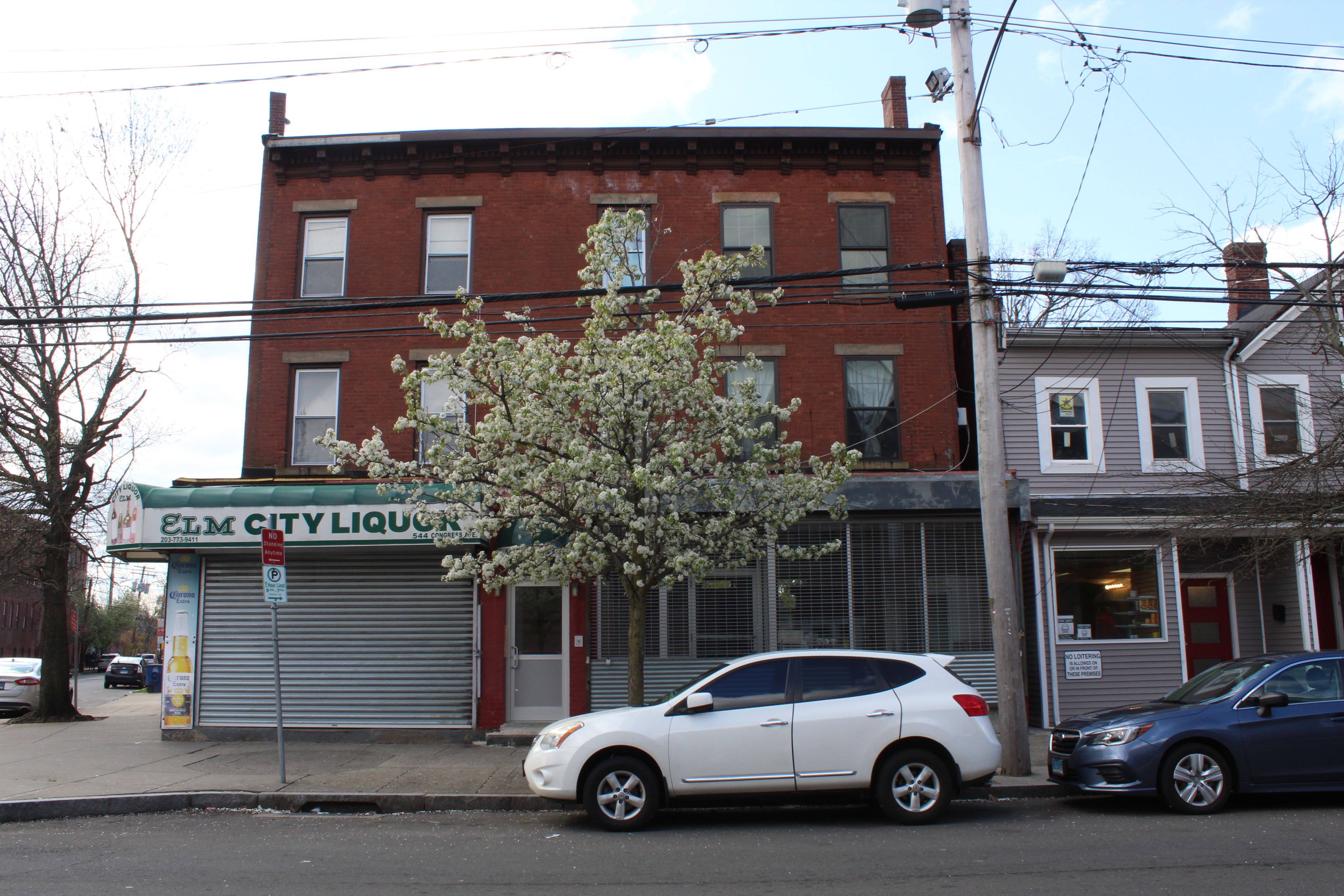
Congress Avenue today (Photo by Emily DiSalvo)
Congress Avenue today (Photo by Emily DiSalvo)
“I miss the way it used to be,” Dye said.
Joseph Levine also reflected fondly on Oak Street’s bustle.
“Storekeepers and their families lived in the back of stores or above them, or on side streets,” Levine wrote. “The stores were closed on Saturdays, when in the afternoon, many Jews walked up and down the street meeting their friends.”
Resistance blocked by lack of information
When Dye’s brother moved to Church Street after the Yale construction, the new home was an upgrade. Same for Charles Grady’s girlfriend, who was relocated from Oak Street.
Grady, one of the first Black police officers in New Haven, supported Lee’s decisions to destroy certain neighborhoods of the city because pf the dire conditions. Relocation was a chance for a better life.
“[My girlfriend] moved to Haven Street which was much better than living on Oak Street,” Grady said. “The only people renewal might have hurt was the merchants.”
Some experts believe that the information conveyed to those affected by urban renewal was framed in a positive light or omitted from public discourse. One way this was accomplished was by calling the neighborhoods “slums” or “ghost towns” to mask what was being destroyed.
“The term is used as part of a kind of rhetorical campaign to perceptually evacuate those parts of the city in order to open them up to redevelopment,” Rubin said.
Some people living in the city at the time were skeptical.
Jake Blum (Yale ‘67) moved into The Hill neighborhood rather than living in an on-campus dorm to help the community organize as part of the Civil Rights Movement. Blum was opposed to urban renewal.
“They come in, they move everybody out of the neighborhood, level the thing, put the expressway into town and the end result was three or four years later all the people who were just moved had to move again,” Blum said. “At the time we were there, The Hill was not slated for demolition. But Black people were horrible emotional victims of urban renewal.”
Most people studying the Civil Rights Movement wouldn’t consider it a hotspot of the Civil Rights Movement.
But that, according to Blum, is because the injustices could be disguised as a public project.
“It's ironic because the New Haven thing, it's subtle to the untrained eye,” Blum said. “You know, racism and inequality is a subtlety to the untrained eye. But in a way it's just as deep when imposed on the people who are the recipients and maybe even worse, because nobody else really acknowledges it's happening. But in the South, everybody knew they were in danger. In New Haven they didn't know.”
In “Model City Blues,” Mandi Isaacs Jackson explained the lack of information around some of the injustices associated with urban renewal was intentional.
“The city was careful to arrange public meetings in such a way as to minimize the possibility of dissent,” Jackson wrote. “The simplest strategies involved having as few meetings as possible under the law, scheduling those meetings too late in the legislative or budgetary timeline to make significant changes and scheduling them at times when most working people could not attend.”
Grady said he respects Lee and his desire to improve the city.
“I can understand why he had some regrets about some things he did,” Grady said. “A lot of people did, and a lot of people still voice their concerns about it. But as an individual, from my wife's family, I can tell you, they have no regrets about what he did. And well, maybe they are just one out of a million or one out of hundreds of millions. But to me, that counts.”
Regret and consequences
Trauma from dislocation still lingers in the Elm City.
“I think about, what does it do to one's psyche, to grow up and live in a place that the rest of the community, the rest of the world, is telling you has no value and can easily be torn down?” said Dubois-Walton of the New Haven Housing Authority. “It says something about the value that community holds for people. I think it has a role in how much people feel they can exercise their power going forward, right?”
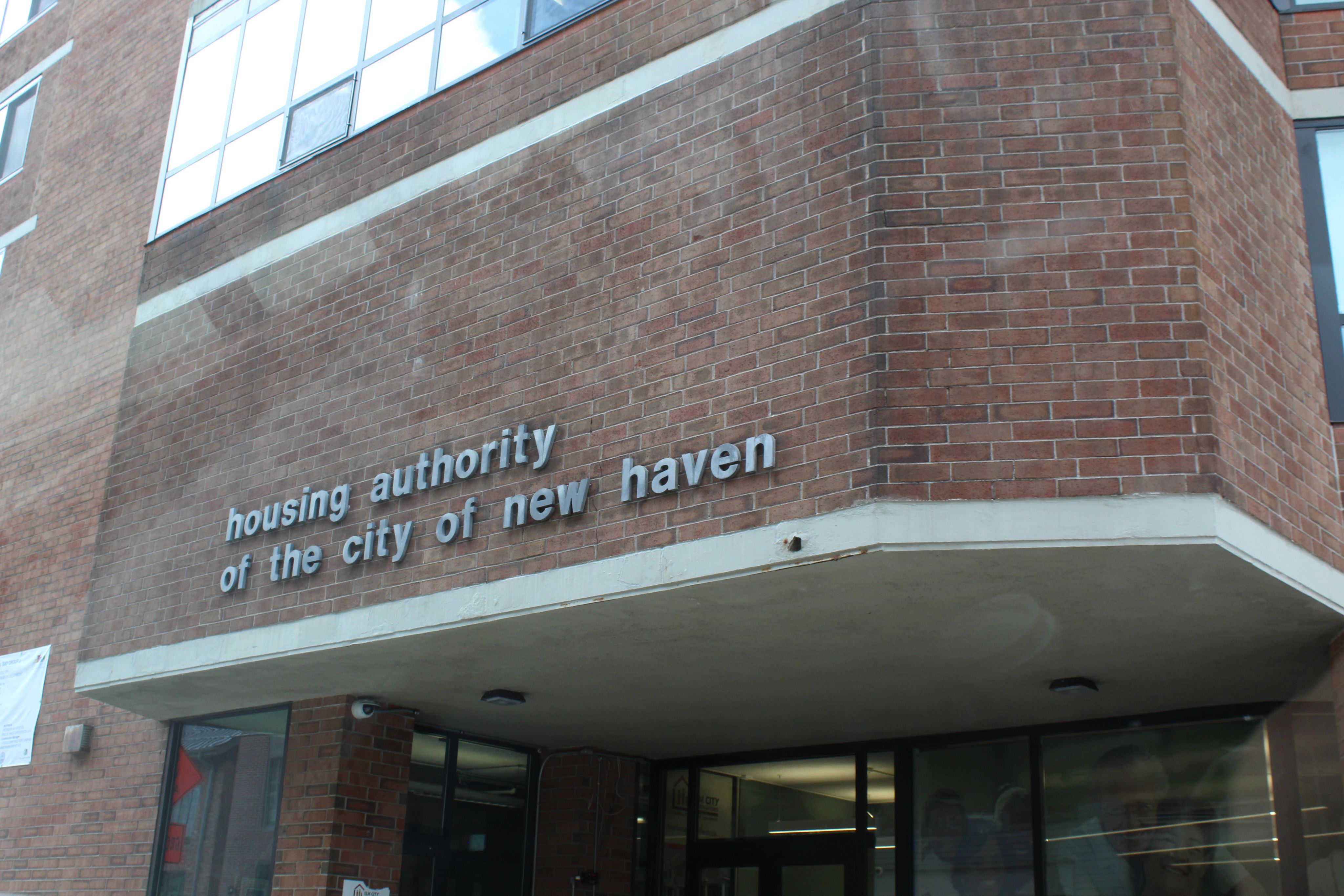
The New Haven Housing Authority, where Dubois-Walton is the executive director (Photo by Emily DiSalvo)
The New Haven Housing Authority, where Dubois-Walton is the executive director (Photo by Emily DiSalvo)
Lee’s daughter, Sally, said the mayor retired with regrets.
“He and I kind of sat around one day and talked about it, he said, you know, in hindsight, ‘I did a lot of things that were wrong,’” Sally Lee said. “‘I was so excited about making the city a better place, that I didn't look at the neighborhoods the way I should have. And instead of knocking down and replacing horrendous housing, I replaced it with, you know, a (parking) garage.’”
Sally Lee said while she is confident that her father’s intentions were good, she shares the frustration of displaced families.
“I can sit here and say the intent behind that was to make it better, but when you're living in those neighborhoods, I now understand the anger that came with it because what was built wasn't a replacement of their homes,” Sally Lee said. “It was buildings and highways.”
The city replaced 1,500 of 5,000 units destroyed causing many of those displaced to leave the city. Henry Parker, who ran for mayor of New Haven three times in 1969, 1971 and 1979, said on a tape that if he were mayor, urban renewal would have gone differently.
“The people of New Haven must be given a voice in deciding where urban renewal will take place,” Parker said on the campaign trail.
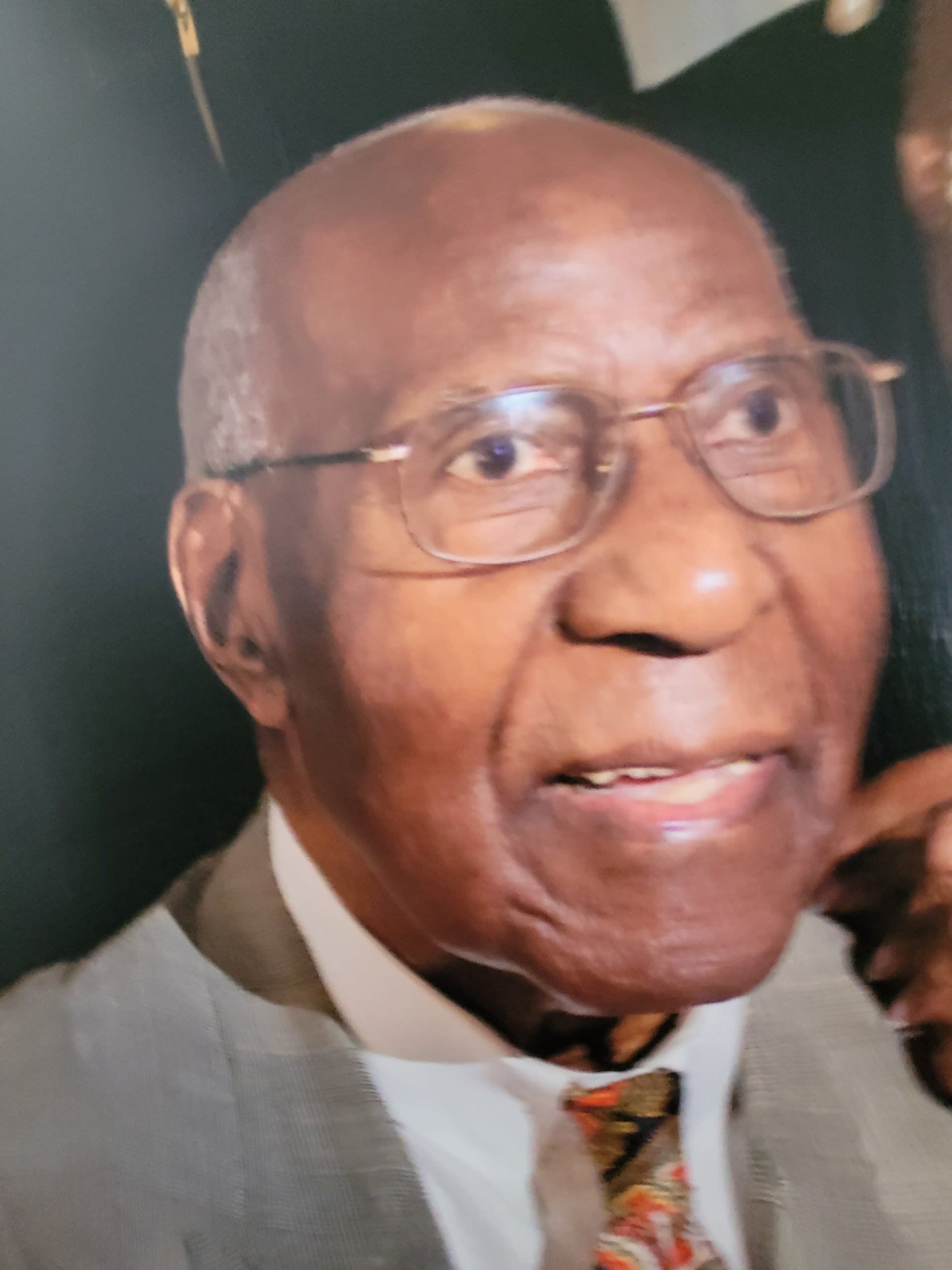
Henry Parker (Photo from his family)
Henry Parker (Photo from his family)

Tapes provided by the Parker family detailed Henry Parker's life and campaign
Tapes provided by the Parker family detailed Henry Parker's life and campaign
Struggle for affordable housing continues
When urban renewal razed their homes, the displaced families' new locations were often race-dependent
Of all the white families displaced, a plurality (38.5%) relocated to a private rental in the city and 26.9% of white families moved on to homeownership in the city. Just 7.7% of nonwhite families went on to own homes in the city.
Of nonwhite families, 29.5% relocated to public housing in the city — the destination of just 8.1% of white families.
The focus of the urban renewal projects was not housing. It was infrastructure. New Haven is still facing housing shortages.
By 1980, New Haven was the seventh poorest city in the country, based on the number of families living below the poverty line. Just 10 years earlier it had been the 38th poorest.
According to the census, 25.2% of people in New Haven lived in poverty in 2010, which is slightly lower than Hartford but above Boston, which had a poverty rate of 18% in 2010.
The disparities in the race of the families living in public housing resulted from discriminatory and racist policies surrounding which families were able to get loans, or redlining.
“The culmination of that is the huge wealth gap — Black families owning far less than white families,” said Karen Dubois-Walton, executive director of the Housing Authority of the City of New Haven. “You see the continued segregation in states like Connecticut, where our suburban communities that were built in this way continue to be higher income.”
Hamden, a suburb of New Haven, had a 9.2% poverty rate in 2010, according to the Census. While New Haven is 43.6% white, Hamden is 58.5% white. Cheshire, another suburb in New Haven County, is 80.3% white.
Dubois-Walton pointed out that New Haven looked to urban renewal policies in the first place because of systemic disinvestment in the cities and the people who lived there to pave the way for the suburbs.
“The highway was used to quickly get people in and out of cities, right?” Dubois-Walton said. “It wasn't used to invest in the city, it was like, ‘Let's find a way to get people who need to come into work quickly and without having to see any of the stuff that they don't want people to see.’ And how do we get you quickly back out to your suburban home after you worked at maybe the university or the hospital?”
The remnants of the consequences of these decisions are still reverberating in New Haven today.
“You see in a couple places where (Interstate) 91 runs through New Haven, it runs through, actually right next to one of our public housing developments,” Dubois-Walton said. “It's a great example of how it cut off that community from Wooster Square and feeling connected to downtown.”
Jim Paley, the executive director of Neighborhood Housing Services of New Haven since 1980, has been studying public housing for decades. He wants to help people in New Haven own homes by investing in neighborhoods and the upkeep of existing homes.
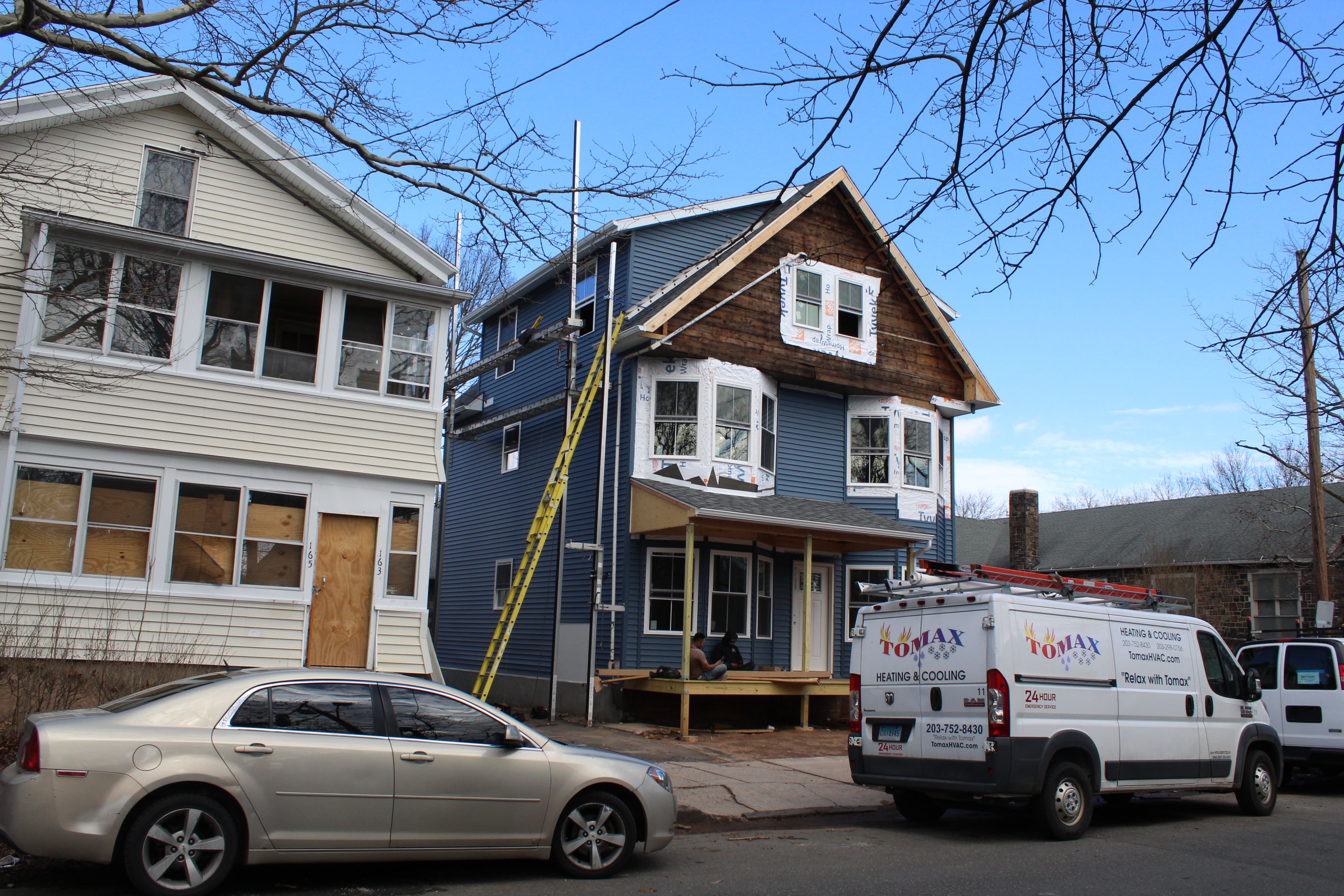
This home is being rennovated by the NHS of New Haven (Photo by Emily DiSalvo)
This home is being rennovated by the NHS of New Haven (Photo by Emily DiSalvo)
Paley said public housing in the traditional sense has failed.
He cited the Pruitt-Igoe apartment complex in St. Louis as an example of public housing gone wrong. In the wake of urban renewal and increased need for housing, he warned against the temptation of building massive public housing complexes as a quick solution.
“It provided for the accumulation of people of a particular socioeconomic and racial and ethnic background in a segregated area,” Paley said. “That was not a successful experiment.”
This predicament was not unique to St. Louis, but the 33 11-story buildings demolished two decades after their construction have the most infamy.
New Haven’s Elm Haven project had a similar fate. Elm Haven, built in the 1940s, was demolished in 1989 due to poor living conditions.
“This was just deemed not to be a good idea, in retrospect, to place all low income, minority people in the same structures,” Paley said.
Elm Haven’s replacement, Monterey Place, is a more successful development according to Paley. The buildings vary in design, layout and income level.
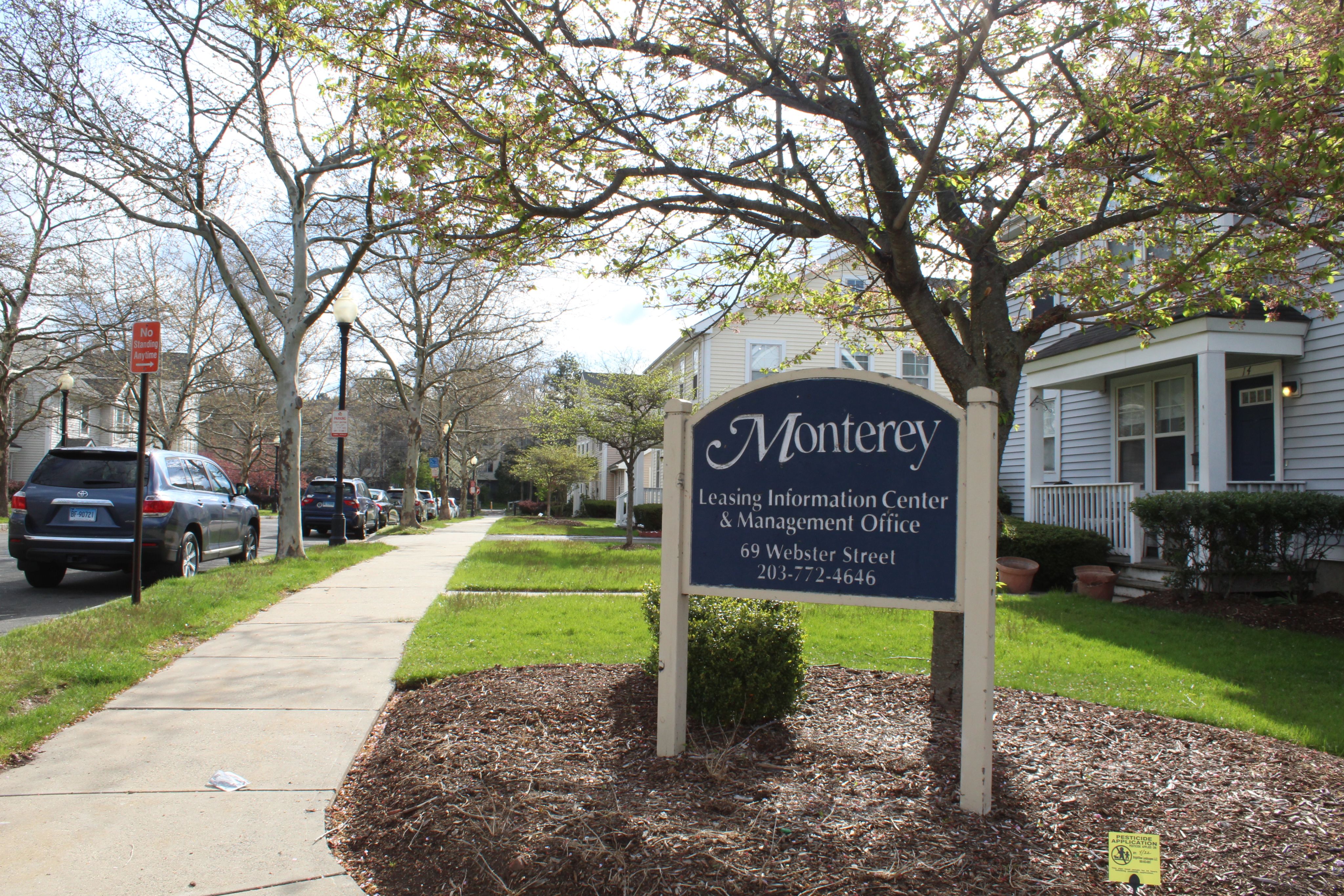
Monterey Place in New Haven (Photo by Emily DiSalvo)
Monterey Place in New Haven (Photo by Emily DiSalvo)
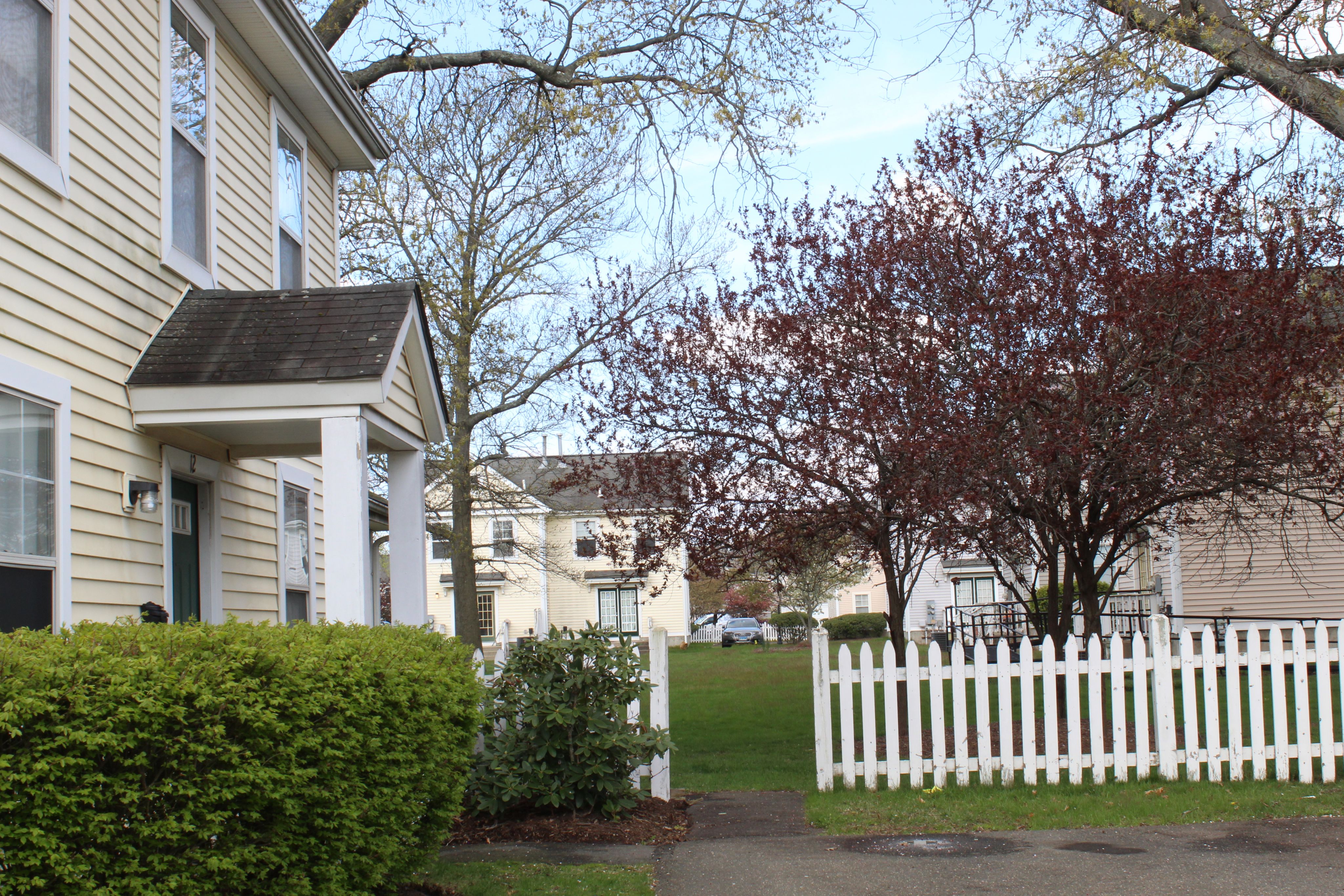
Rather than a tower-style complex, Monterey Place features a variety of multi-family housing such as duplexes. (Photo by Emily DiSalvo)
Rather than a tower-style complex, Monterey Place features a variety of multi-family housing such as duplexes. (Photo by Emily DiSalvo)
As for Lee’s approach to urban renewal, Paley said he wished the city had tried to rehab some of the existing homes and then constructed sensible, accessible, mixed-income housing for those who were relocated.
“Some of the houses could have been preserved instead of demolished,” Paley said. “Certainly, broad scale demolition was a mistake. But what they chose to replace the houses that were demolished, that are called slums, was not really effective over time.”
Trending now: The plan from 1910
It’s been over a century since the “Report of the New Haven Civic Improvement Commission” died on Mayor Frank Rice’s desk.
New Haven does not have a subway running beneath it, but it does have a “highway to nowhere” running through it and many parking garages. There are some bike lanes and parks, but they are built around roads for cars, not vice versa.
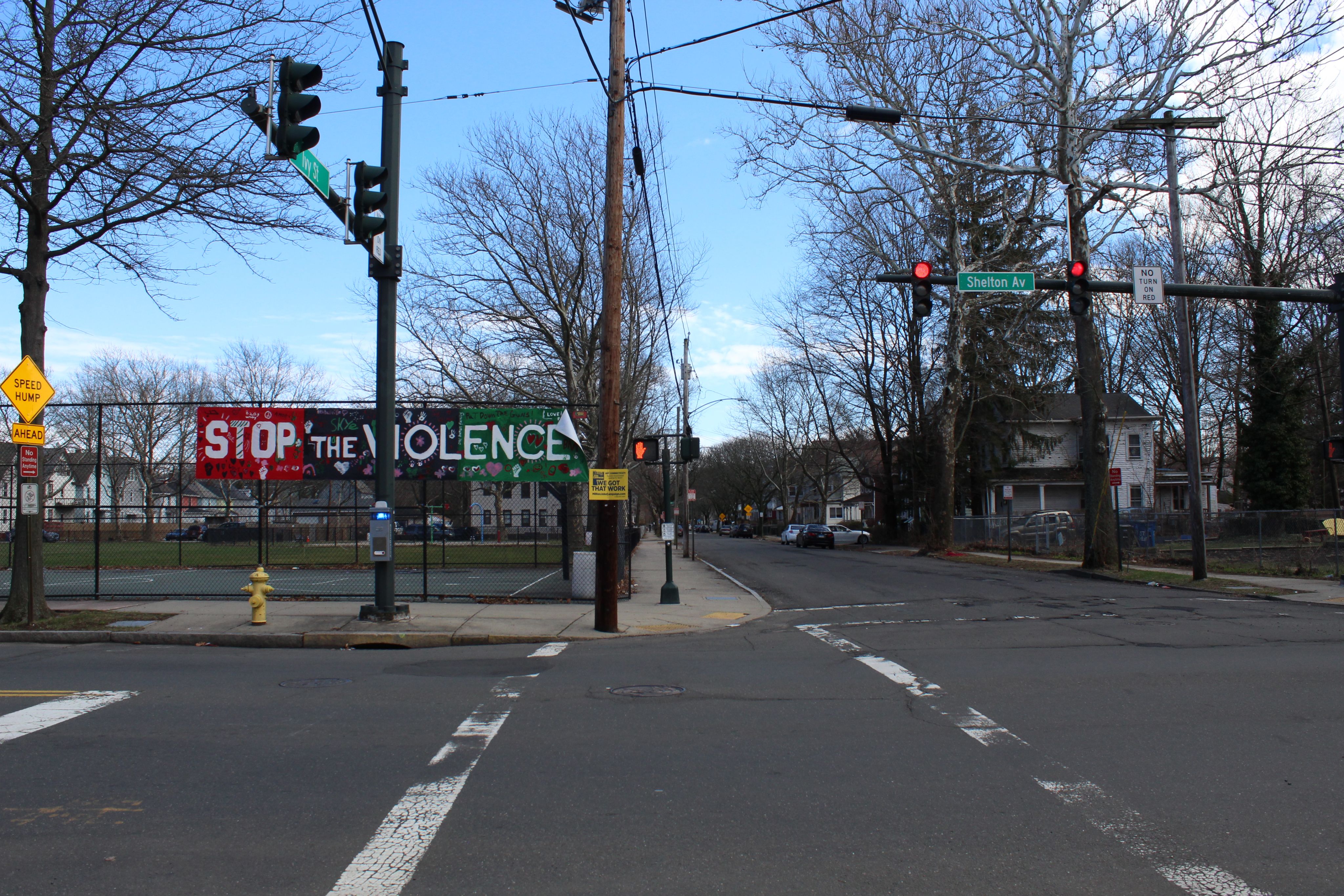
A sign reading "Stop the Violence" is hung from a fence on Shelton Avenue in New Haven. (Photo by Emily DiSalvo)
A sign reading "Stop the Violence" is hung from a fence on Shelton Avenue in New Haven. (Photo by Emily DiSalvo)
The Downtown Crossing Construction is a step toward reconnecting a city disconnected by car-focused infrastructure. It is also part of a larger movement across the state and the country to refocus on pedestrians, bicyclists and neighborhoods.
“Many people have jobs that essentially require them to drive everywhere, or have organized their lives around having multiple cars in a household,” said Sandy Johnston, city planner with Boston Metropolitan Planning Organization. “Those cars might be bankrupting them, but they can't envision… they may not be in a position where they can negotiate anything else for them. We need to figure out how to make that transition happen, because it is necessary. If we can't do that, we have to give up on fighting climate change.”
A life before cars existed in New Haven and continues to exist, but city planning decisions that involve car-related infrastructure changed behaviors and expectations for how people would get around.
Doug Hausladen said that 30% of New Haven households have no car.
A 2017 study revealed that 62% of millennials preferred a walkable community. Many groups in Connecticut such as SafeStreets Coalition, DesegregateCT and the Commuter Rail Council have advocated for those trying to get around in ways other than driving.
Lessons learned? Maybe
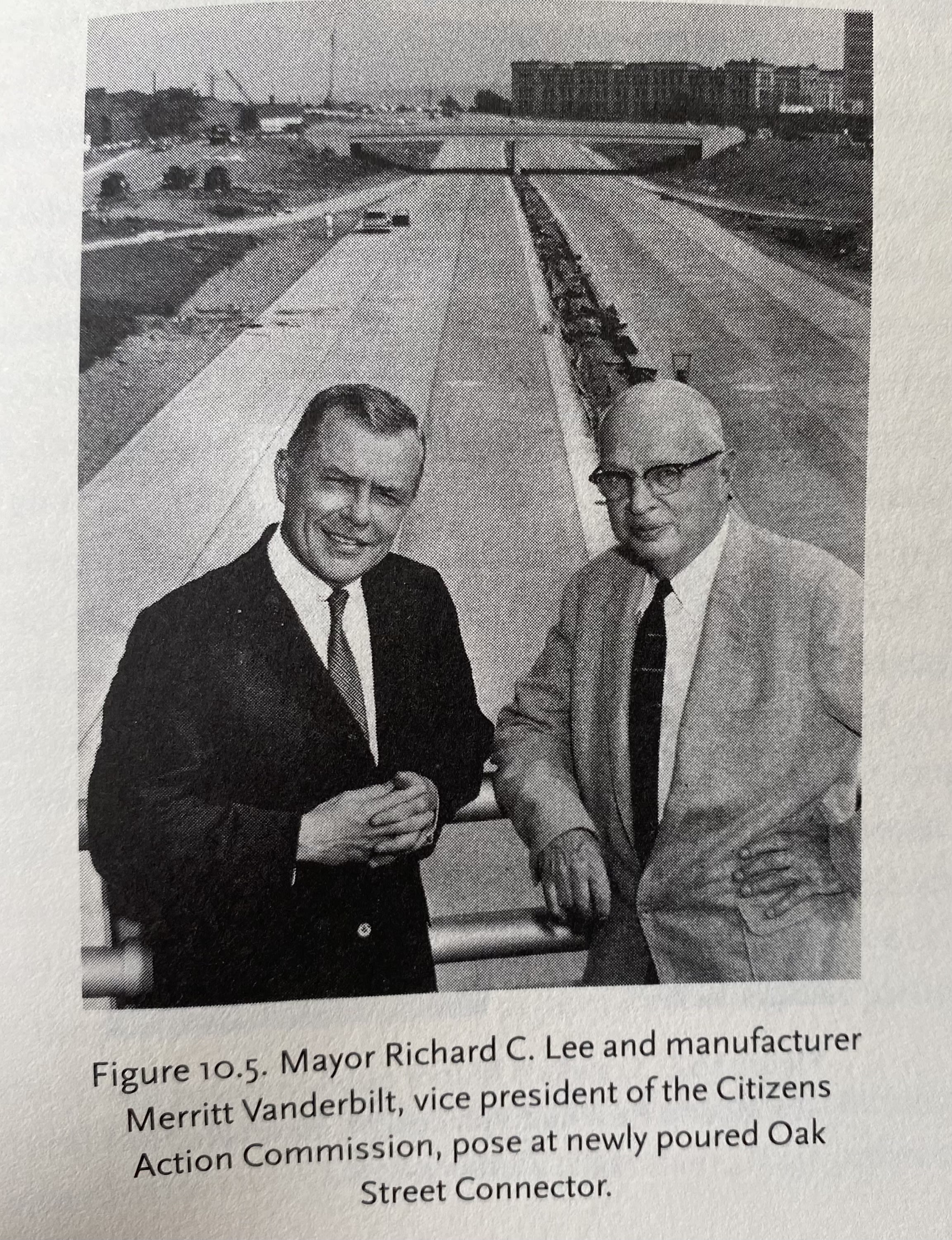
(Photo from "City" by Douglass Rae)
(Photo from "City" by Douglass Rae)
Lee is not here to defend his decisions. Nor is Logue. But the consensus among family members, historians, experts and their own words at the time is that The Oak Street Connector and the other remnants of urban renewal were not meant to be a project so disastrous that the city would have to spend decades reversing it.
“He said, ‘You know, I could have restored that building, and made it into apartments. But instead, I knocked it down and put concrete up. And, you know, I look back on that, and, and in hindsight, as an older man, I think I could have done things differently,’” Sally Lee said, describing a conversation she had with her father in his retirement.
Biotech companies are among the structures being built on boulevards that used to be highways in downtown New Haven.
“You increase the connections between the communities and by developing on these parcels you make the city more like a human scale instead of this giant canyon of roads that you have to cross,” said Adam Weber, municipal civil engineer in New Haven.
The Congress for a New Urbanism advocates for highway removal and walkable urban spaces, through the “Highways to Boulevards” program.
Ben Crowther, who manages that program, said there has been a legacy of building highways through the path of least resistance, which is usually on the cheapest land, owned by people with the least means to fight back.
CNU hopes to change that. Crowther pointed to recent highway removal programs in Rochester as a success story.
“They've taken out about two thirds of a mile of their inner loop and replaced it with a city street…” Crowther said. “Rochester has been able to reclaim six and a half acres of land…they've built about 540 housing units.”
A new generation of leaders is coming of age in New Haven with big dreams not unlike Lee, delivering papers door to door so many decades ago.
“I think rebuilding communities is exactly what we're trying to do,” said Eli Sabin, a Yale student and New Haven alderman. “I think we're trying to create the built environment, the infrastructure that allows communities to flourish. So that means, the housing, the affordable housing, the safe, walkable streets with access to transit and jobs, the restaurants and businesses that people want to be close to.”
Sabin has lived in New Haven his whole life and has no plans of leaving. It may not be a “model city,” but he said it’s one with a lot of potential.
“The New Haven that I want to live in 10, or 15 or 20 years from now is the New Haven where everybody who wants one has a good paying job they can support their family on and has an affordable place to live and feel safe on our city streets and that their kids are going to a good public school,” Sabin said.
“I think, if we make that happen, all the other problems that we face in the city are going to go away.”
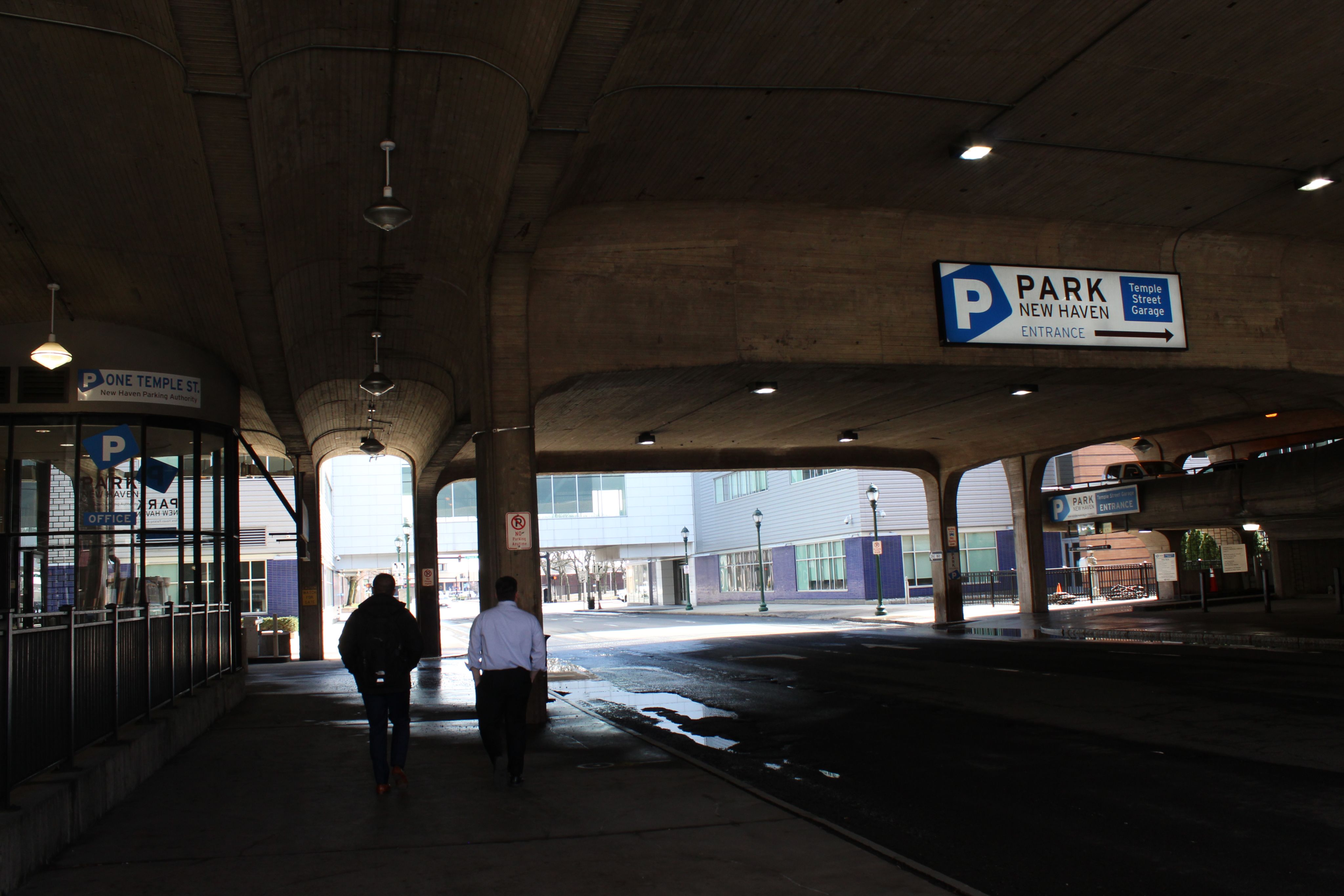
The Temple Street parking garage is one symbol of the car-focused era of New Haven. (Photo by Emily DiSalvo)
The Temple Street parking garage is one symbol of the car-focused era of New Haven. (Photo by Emily DiSalvo)
